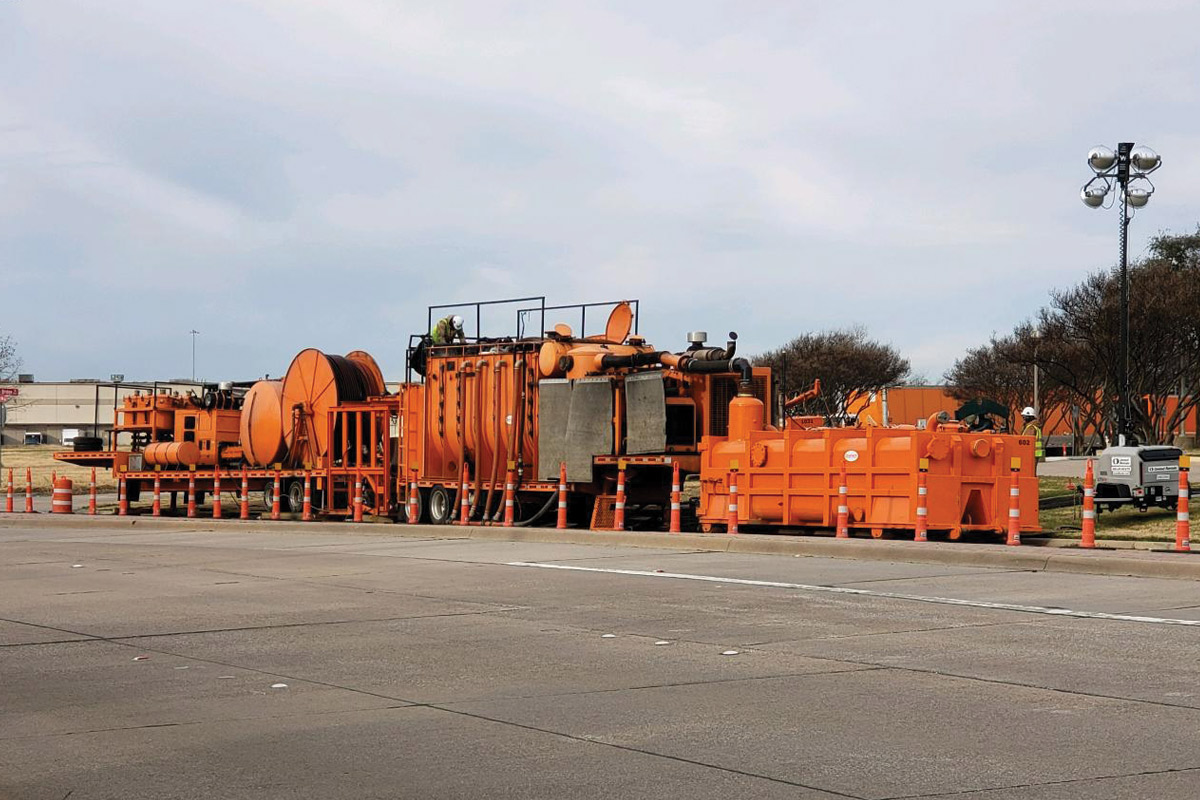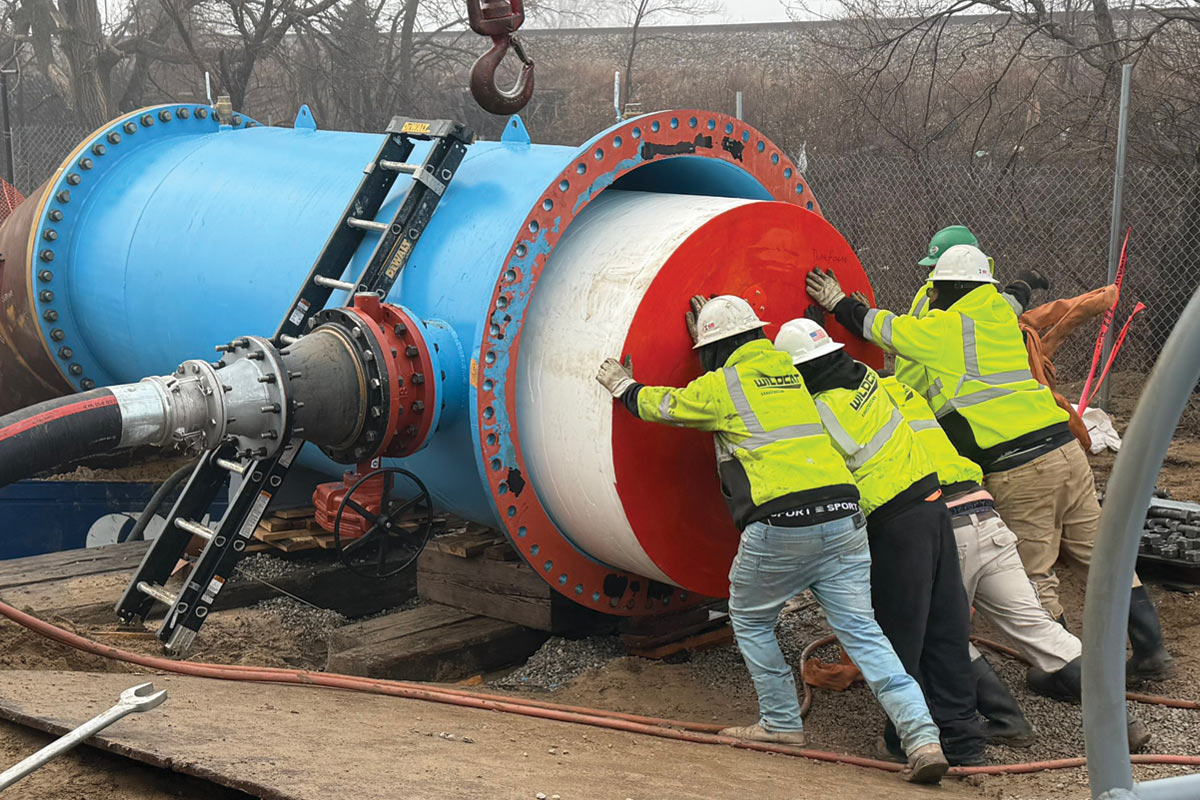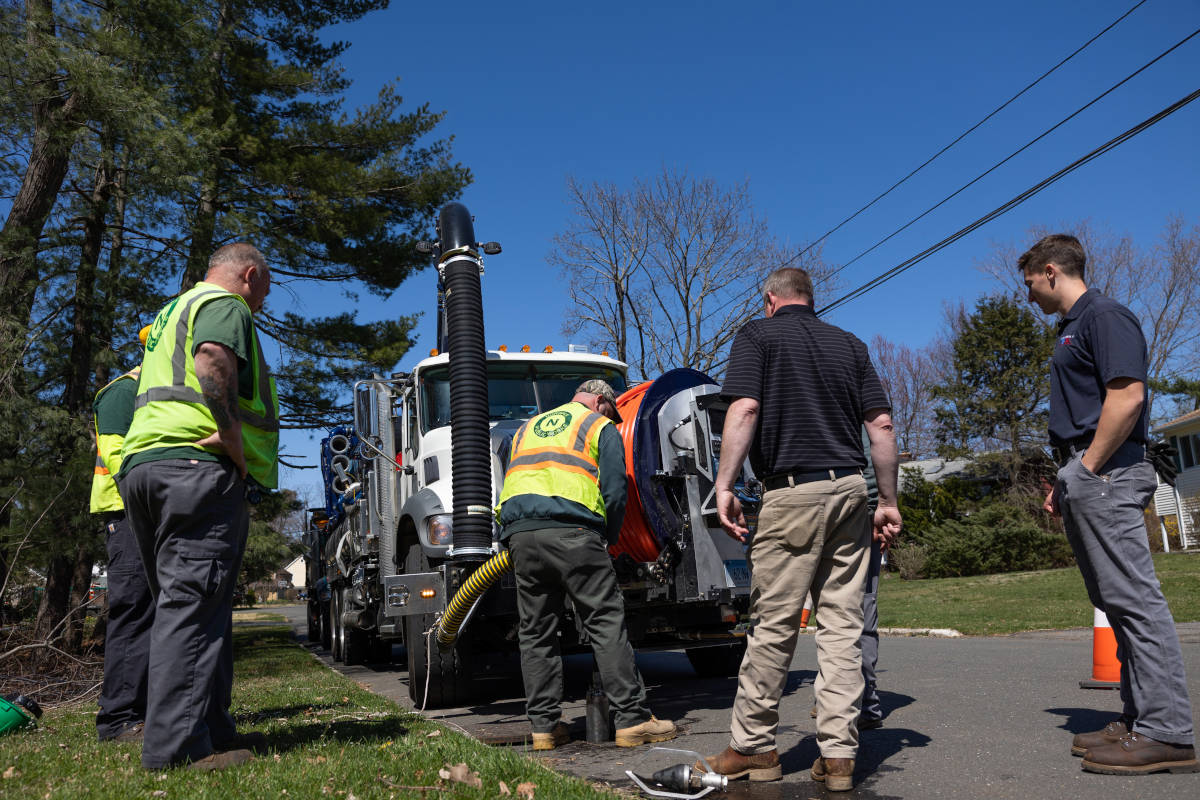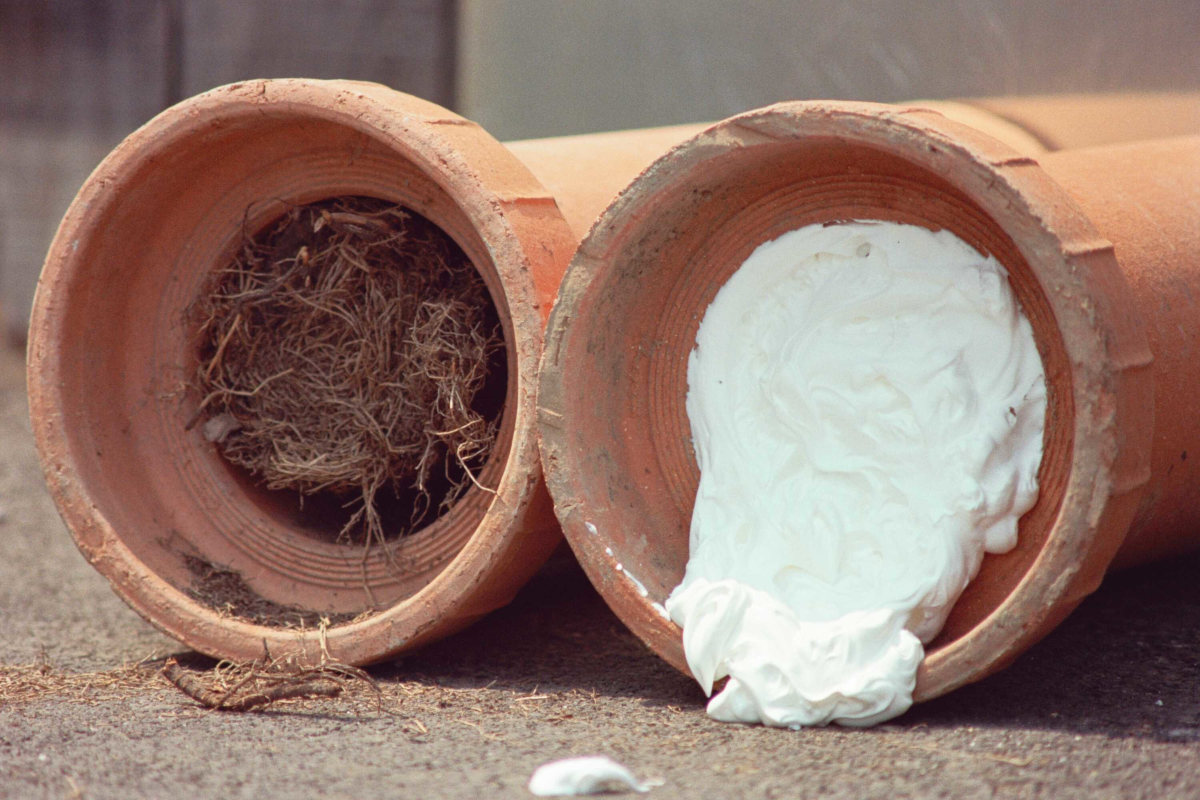
Root Control in Ohio — The City of Worthington Stays on Top of Its Sewer Maintenance
The City of Worthington, Ohio, is one of Ohio’s oldest cities, founded in 1803; however, city officials of this quaint city are far from steeped in the past when it comes to the care and maintenance of its underground sewer program. Far from it.
For the last 25-plus years, the City has actively and proactively worked to provide its 14,500 residents with the best service by working underground to keep the pipes clean and at full capacity using the latest technology at its disposal.
“My goal has always been to serve the community and residents to the best of my ability,” says superintendent Steve Tennant, who has been with the city’s Service and Engineering Department since 1989. “When I put the program together, my goal was always to never have a backup in our main lines, as well as to be able to give residents as much information that I could.”
When Tennant joined the Service and Engineering Department, there was no comprehensive maintenance program. When his then-director asked for volunteers to take on the challenge to develop one, Tennant didn’t hesitate. First up: creating a database of the city’s manholes and pipes. This was accomplished without access to today’s software and mapping technology. Tennant used old school techniques at the time, which basically meant he spread out a paper map of the city on his kitchen table and began circling every manhole and gave each a number.
“I numbered every manhole and then divided the entire sewer system into districts,” Tennant recalls. “We have a total of eight districts, covering 80 miles of sewer. Our largest districts have 300-plus manholes in them.”
And so began the journey to getting and keeping the city’s sanitary sewers in top shape.
RELATED: Controlling Roots in Lethbridge, Alberta
The Root of it All
The City of Worthington is a suburb of Columbus, Ohio, with a population, as of 2016, of more than 14,500. A close-knit community that is landlocked, there are no treatment plants within its 5 sq miles. All sewage is sent to Columbus for treatment. There are no force mains in Worthington, just gravity sewers. Fourteen percent of the sanitary sewer system was constructed more than 76 year ago but the bulk of it (52 percent) was constructed between 51 and 75 years ago. A small portion of the city was built out in the 1980s and PVC was used. There is one major trunk line that runs through the city.
All in all, the city’s sewer system is in comparatively good shape vs. other U.S. cities of comparable size, Tennant says. The oldest sewer pipes were installed in 1920 (some even earlier) and are considered to still be in good condition. “Our overall condition has been good compared to some of the stuff I’ve read about other cities,” he says. “For the most part, the pipes that were installed in 1920, were installed by hand and most of it, unless they were damaged, are in really, really good shape.”
Given the overall age of the Worthington system, it’s not surprising that the majority of the pipes are made of vitrified clay. And if you have older vitrified clay pipes in your sewer system, you have root infiltration, Tennant notes. “Ohio is known for its trees and Worthington is a ‘Tree City,” he says.
Just how bad were the roots when he started developing the city’s maintenance program? Hard to say, Tennant admits. “We just didn’t know,” he says simply, noting they didn’t have a camera to CCTV the system. All they had to go by were sewer backups, whose primary culprit, they would see, was roots. Back then, the overwhelming majority of roots were handled using mechanical means, such as root saws and power rodders. A flusher truck then cleared out the debris. But mechanical means doesn’t stop them from returning, as they found out.
Once Tennant had created the districts and numbered the manholes, his next challenge was keeping track of any work done to them and to plot out future work — done back then with paper and pencil. Computers came to his department in 1991 and the information was loaded into a database created by one of the department’s technicians. “That’s how we kept track of stuff. We use that database to this day,” Tennant says. “We keep track of every sewer backup, every time we clean a line, every time we chemically treat a line and every time we use a root saw.”
He laughs at the early days of using computers: “I think our hard drive then was 250 MB. My phone is bigger than that now!”
RELATED: Trenchless Pipe Repairs, of Seattle, Proves Reputation is Built with Results you Can Show

For its in-house root control the city uses a For their in-house root control, it uses a Vaporooter truck-mounted unit, The Jet Set Commander Computerized Foaming System.
Camera Ready, Chemically Treated
In 1996, the department’s director and then-superintendent attended a tradeshow and saw the latest in sewer camera equipment. Realizing its usefulness, they purchased one, which was promptly mounted into the bed of the city’s pickup. “We kept track of the roots in the lines by counting how many came through a joint,” Tennant remembers. “We really didn’t know what we had. When we got the camera system, we started keeping track of which lines had roots, etc.
“Our goal is that we video every sanitary sewer line every eight years and clean as necessary,” Tennant says.
Today, the city’s on its third camera system, an Envirosight system; after 15 years of using the same jet truck, the city purchased a GapVax combination vehicle for cleaning, as well for hydroexcavation. Tennant and his crews also use Pipe Tech software for digital storage of its system’s data and to code defects to PACP standards. He and his crews are also PACP certified.
The City of Worthington has used chemical root control in some form since before Tennant was hired in 1989. “But it wasn’t being done effectively,” he says. “We starting using it effectively when we got our camera in 1996 and then we could identify where the roots were.”
Today, the city uses a combination of products to combat roots and fats, oils and grease. For their in-house root control, it uses a Vaporooter truck-mounted unit, The Jet Set Commander Computerized Foaming System; it is the City’s second Vaporooter system. On a yearly basis, the city chemically treats 30,000 to 50,000 ft of sewer — an overwhelming majority done inhouse, Tennant says. The rest is contracted out.
“Every line we know has roots in it is on an every-other-year schedule to be chemically treated,” Tennant says.
RELATED: The City of Racine Orders a “MRI” for Pipe Leak Detection
Going Forward
The City of Worthington knows the sweat and effort it takes to develop and maintain a successful comprehensive sewer maintenance program. Being a municipality, programs are sometimes tempered by budgets, but Worthington continues to press forward.
“The technology is always progressing and money is always an issue in a city. We dream it and make it happen,” Tennant says. “We’re getting there. Sometimes it’s taken us a little longer. But today, we have the ability to look on our phones and say this line has been cleaned or this line has been treated. I feel confident when I talk with residents about their sewer line and when we have cleaned it and we know where the roots are.”
All the work Worthington put into its preventative maintenance program nearly 30 years ago has paid off, especially when comes to EPA regulations; it gave them a head start. “Back then, the guys were telling me, ‘You’re wasting your time,’” he remembers. “But when CMOM (Capacity, Management, Operations, and Maintenance) came out, all of this data was beneficial because we knew what kind of system we had.”
Tennant advises other cities that have not developed or implemented a comprehensive sewer maintenance to do so. The first step is to determine what you have and where you have it. “Know your system,” Tennant says. “Learn what your system is and identify the manholes, identify the pipes and know where they are located. You can ask me any street and I can tell you where that pipe is.”
You just can’t be afraid to start and you can’t be afraid to fail, he says. “The end goal for us is to offer the best possible service to the Worthington community and we strive for that every day,” Tennant says.
Sharon M. Bueno is managing editor of Trenchless Technology.





